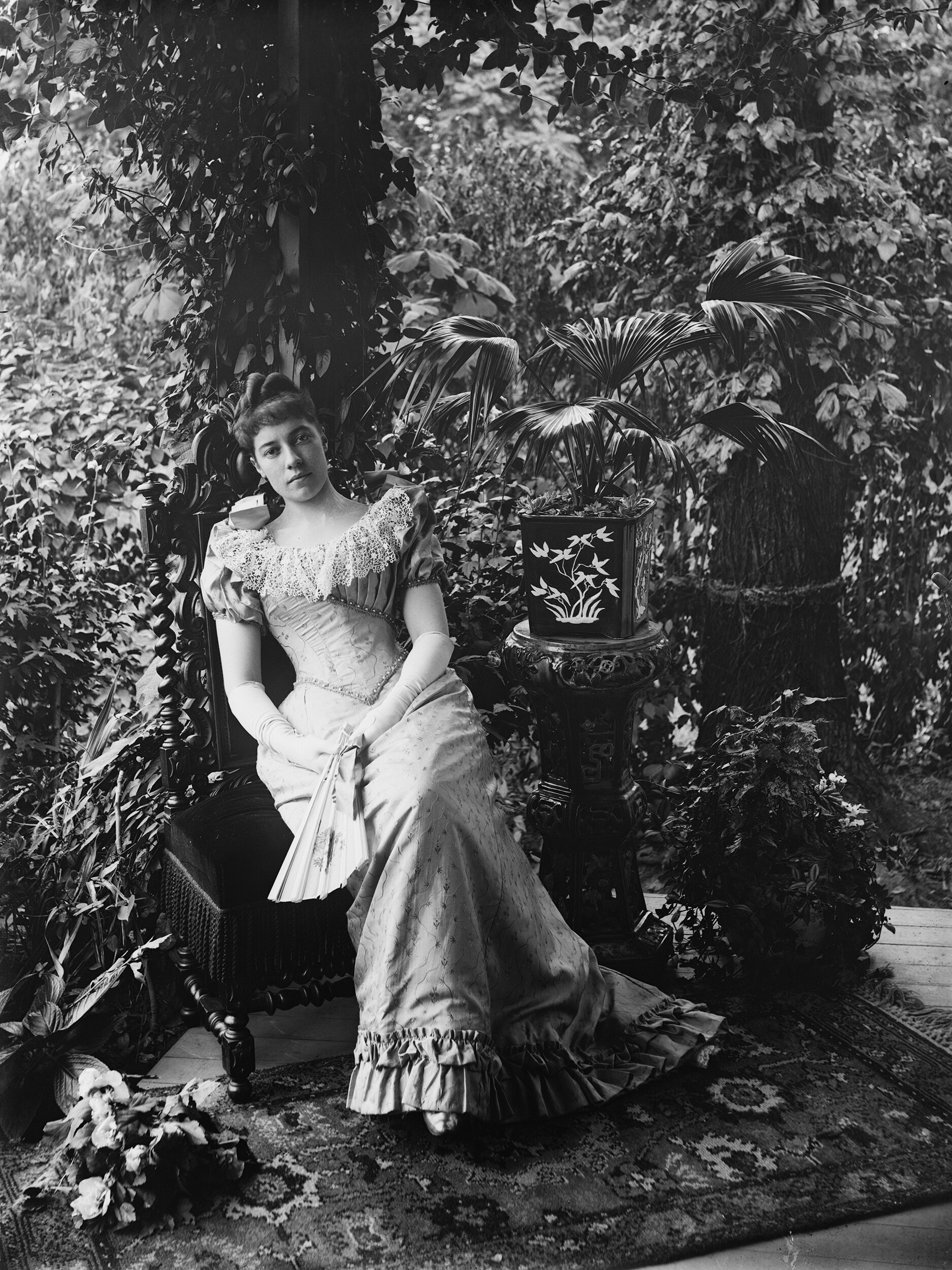Alice Austen: Alice Austen, Satirist
Miss Alice Austen and Staten Island’s Gilded Age
by Bonnie Yochelson
Alice Austen, Satirist
In the summer and fall of 1891, Alice used the camera to mock the social rituals that for nearly a decade she had vigorously embraced. These now-famous photographs—which feature Julia Marsh Lord, Gertrude Eccleston Barton, Julia Bredt and Julia Martin—challenge social norms more daringly than her previous tableaux. About these photographs Alice later remarked, “We did it just for fun.” Behind the fun was a rebellious impulse. For years, Alice sought social status as if it were a competitive sport, collecting her dance cards, newspaper mentions and tennis scorecards. At 25, she began to doubt the worth of “the larky life” and its ultimate goal, matrimony.
Trude & I masked, short skirts August 6, 1891. Collection of Historic Richmond Town, 50.015.5462
Standing in Trude’s rectory bedroom, Alice and Trude defiantly pose in their undergarments and stockings, pretending to smoke cigarettes and looking vaguely like women of ill repute. Lt. Gregg was then on Staten Island wooing Trude, and Alice photographed them swimming together at the Clifton Boat Club and posed romantically at Clear Comfort.
Julia Martin, Julia Bredt and self dressed up, sitting down, October 15, 1891. Collection of Historic Richmond Town, 50.015.6610
Alice, Julia Martin (center) and Julia Bredt pose for the camera wearing men’s clothes. Alice made two exposures, one standing and one seated. In the latter, Julia Martin places an umbrella provocatively between her legs.
When the photograph was taken, Julia Bredt and Alice were visiting each other regularly, and Julia was encouraging a romance between Alice and George Booth. Five days after this session, Julia Martin left Staten Island to assume her post as companion to Mrs. Snively’s mother.
Both Julias eagerly awaited these photographs in the mail. From Albany, Julia Martin wrote, “Do hurry up & finish our photographs. I am so anxious to see them, & do write me and tell me all the news.” From Bethlehem, Julia Bredt reported that the children of her household had opened Alice’s package of photographs, which were enjoyed by all.
I am sure you wonder if I received the pictures, thank you so much for them they are perfectly splendid. What do you think, they came in the morning while I was out at church. When I came in . . . the children had opened them & there they were out in full view. Of course everyone caught on, I was wild. Everyone said, who is the Cuban [Julia Martin in the Cuban straw hat], & the girls who saw them thought you the best.
Self, Julia Martin and Julia Bredt, October 15, 1891. Collection of Historic Richmond Town, 50.015.6609
The Darned Club, October 29, 1891. Collection of Historic Richmond Town, 50.015.5564
The Darned Club in a chair, October 29, 1891. Collection of Historic Richmond Town, 50.015.5563
At Clear Comfort, Alice made two exposures of “The Darned Club,” whose members—Alice, Trude, Julia Marsh Lord, and Julia’s cousin Sue Ripley— were close friends and neighbors. Their male friends, frustrated to be excluded, gave the club its name, and the women liked it. Apparently short-lived, the club met regularly.
In a June 21, 1891 letter, Alice’s mother wrote, “Sue Ripley came here to say that her Darned Club would be off til Tuesday and would take the form of tennis.” Julia Lord was married and five months pregnant when Alice took these photographs but remained actively engaged in her girlfriends’ lives.
The club expressed the friends' resistance to male authority. Both the standing pose, in which the women embrace each other’s waists, and the seated pose, in which they form a tight circle, were staples of Victorian portraiture.
In the summer of 1892, Alice composed a series of elegant, full length, formal portraits of herself and her friends against the lush foliage of the Clear Comfort piazza. As embodiments of a Gilded Age feminine ideal, these portraits counter the 1891 satires. They alert us to Alice’s awareness—in today’s parlance—of gender as a social construct.






![[Trude sitting on arm of chair], July 1892 Collection of Historic Richmond Town, 50.015.6585](https://images.squarespace-cdn.com/content/v1/5d23a00f53f6300001f811bb/1630205542457-T28105RD9NX8CEH66MBJ/50.015.6585_aa_slide-1-c.jpg)
![[Julia Bredt, full length, full face], September 19, 1892 Collection of Historic Richmond Town, 50.015.6574](https://images.squarespace-cdn.com/content/v1/5d23a00f53f6300001f811bb/1630205575529-QMQ2G0NVS1JP14YLZPAE/50.015.6574_aa_slide-2-c.jpg)
